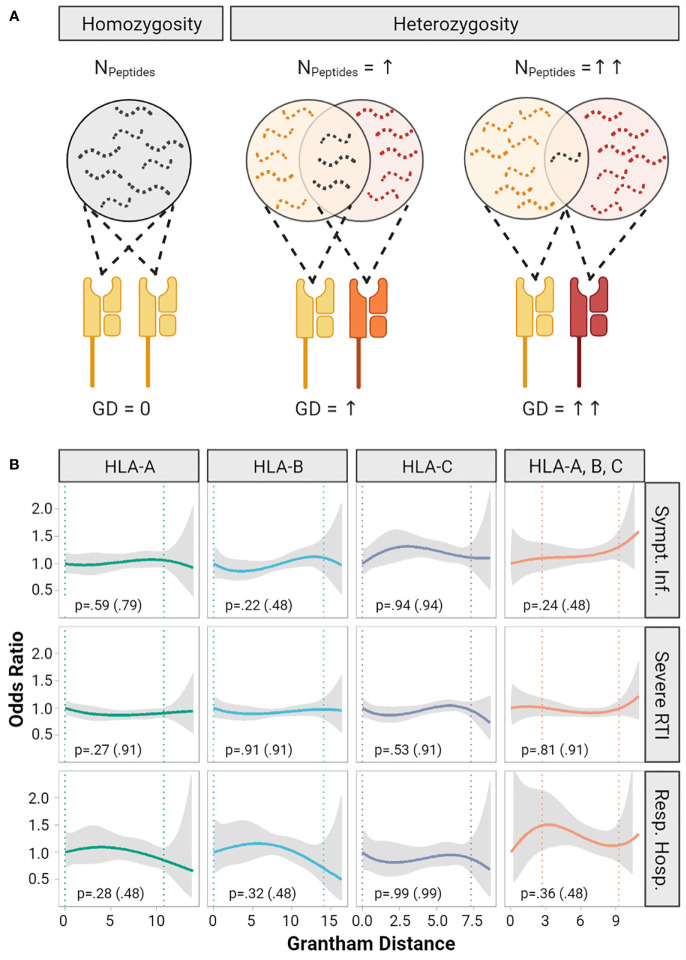Figure 2.
Impact of Grantham Distance of heterozygous HLA-A, - B, -C alleles on COVID-19 severity. (A) The concept of the evolutionary divergence of HLA (HED): For a given HLA-locus the pool of presentable peptides is limited in size and diversity, when both alleles are identical (i.e. homozygous). It gets larger for heterozygous allele combinations and might be largest for two HLA-alleles that show the highest HED. Divergence might be quantified by the Grantham Distance (GD), a metric based on physicochemical differences of the amino acid sequence of HLA-molecules. Panel (B) shows smoothed plots for the odds ratios (OR) of the risk of symptomatic infection, risk of severe respiratory symptoms (RTI) and risk of respiratory hospitalization depending on the GD of HLA-A, -B, -C and the mean of these three loci. The gray ribbons represent the pointwise 95% confidence intervals. Homozygous individuals with a GD of 0 were set as reference (OR = 1). The vertical dotted lines indicate a 90% range of individual’s GD by cutting the lowest and highest 5% of GD values observed. The p-values are based on multivariable logistic regression models testing whether a one-unit increase of the Grantham Distance increases the odds ratio. In addition, p values adjusted for multiple testing are provided in brackets.

